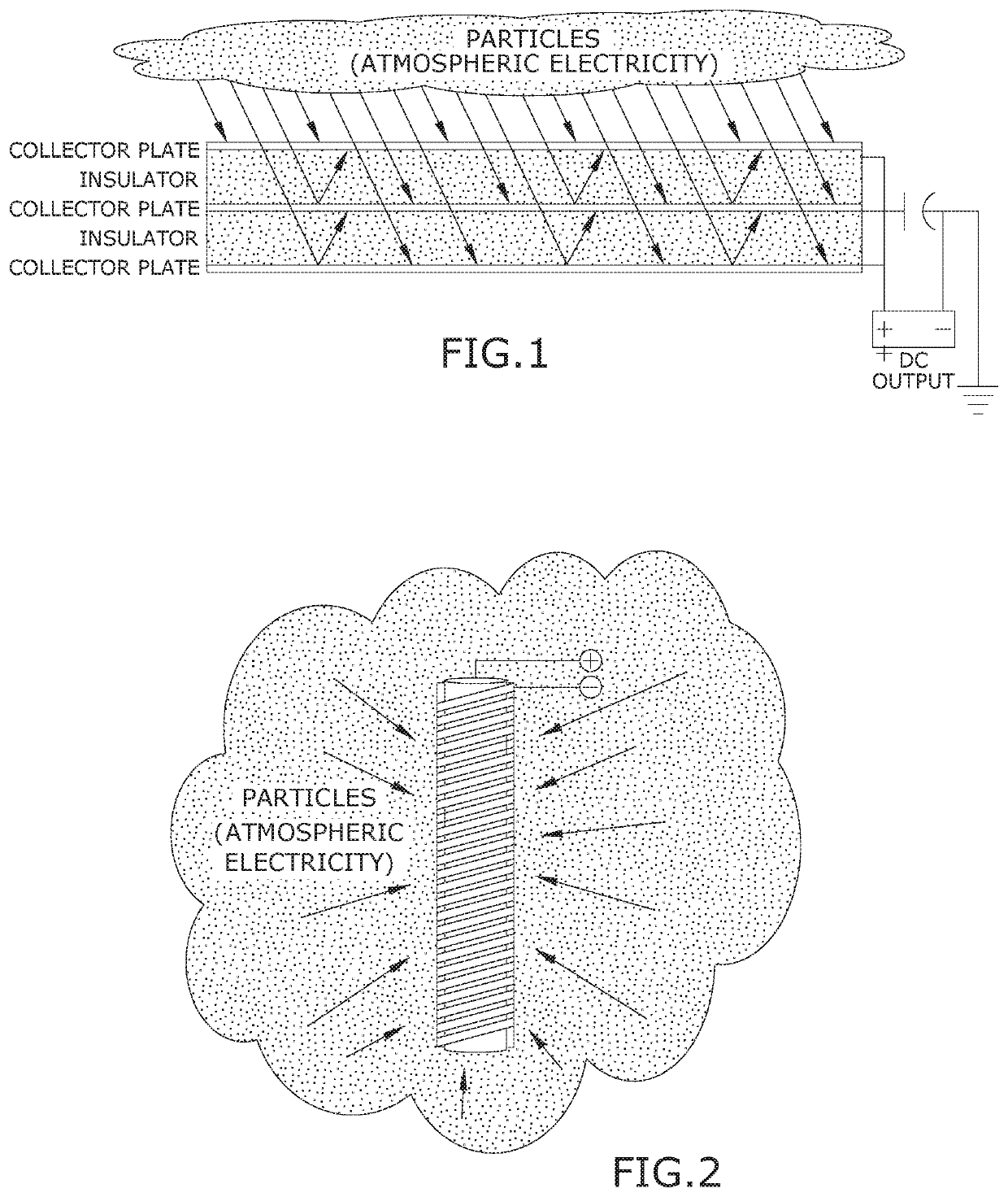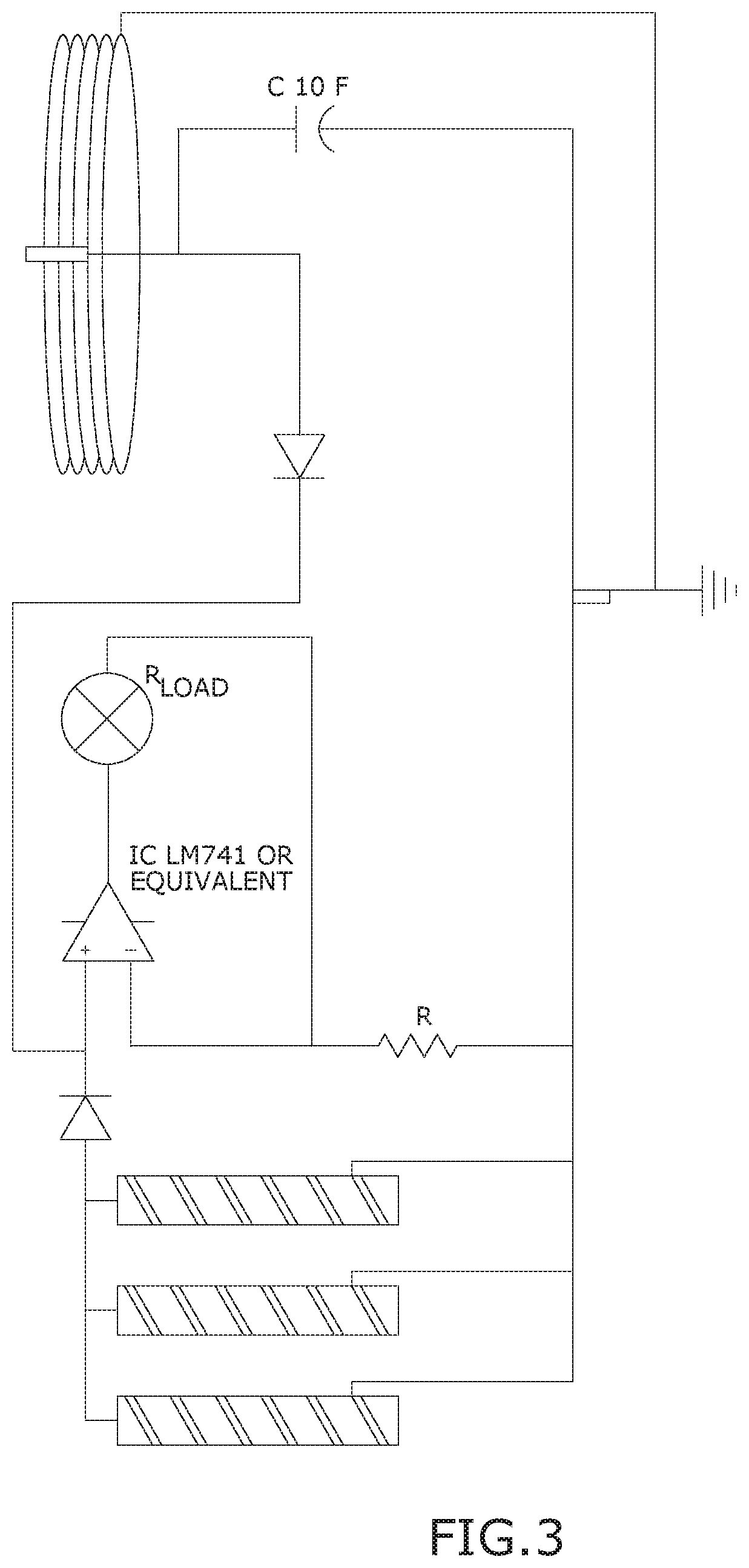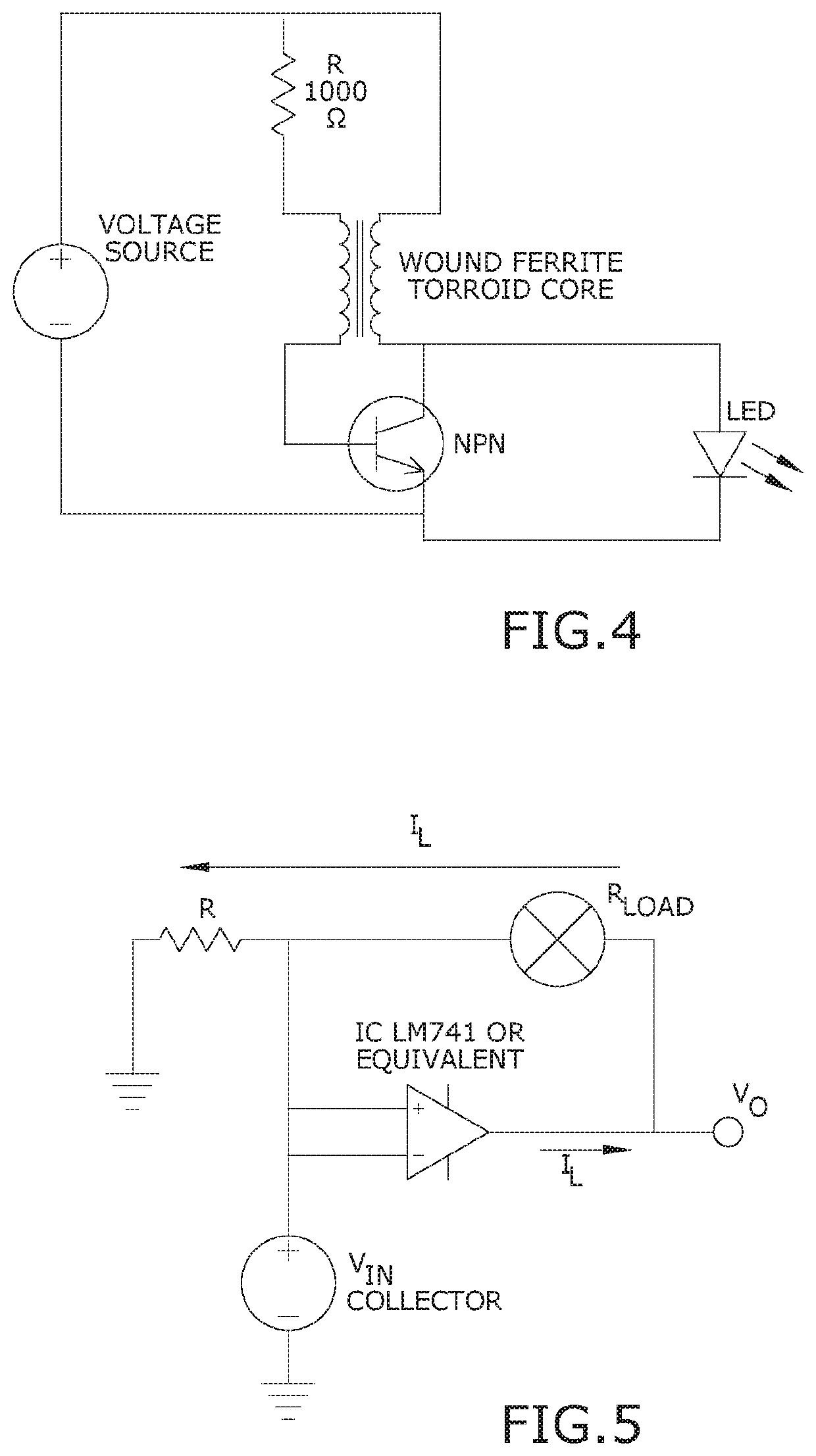Methods and devices for harvesting ionic energy to produce electricity
a technology of atmospheric ionic energy and electricity generation, applied in the field of electric generators, can solve the problems of not being able to produce higher voltage power, no technology exists to harness the potential energy in a useful fashion, and high cost of power storage on solar panels
- Summary
- Abstract
- Description
- Claims
- Application Information
AI Technical Summary
Benefits of technology
Problems solved by technology
Method used
Image
Examples
Embodiment Construction
[0017]The following detailed description is of the best currently contemplated modes of carrying out exemplary embodiments of the invention. The description is not to be taken in a limiting sense, but is made merely for the purpose of illustrating the general principles of the invention, since the scope of the invention is best defined by the appended claims.
[0018]Referring to FIGS. 1 through 7, the present invention may include a system for harvesting atmospheric Ionic energy to generate electricity. The atmospheric Ionic energy results from cosmic radiation in space colliding with gases in the terrestrial atmosphere, wherein a global charge differential is created between the charged ionosphere and ground. The system present invention embodies one or more conductive surfaces or collectors 20 coupled to a generator device 10 positioned or arranged to optimize the collision and / or attraction of naturally occurring ions at a subatomic level.
[0019]The collectors 20 on the generator de...
PUM
 Login to View More
Login to View More Abstract
Description
Claims
Application Information
 Login to View More
Login to View More - R&D
- Intellectual Property
- Life Sciences
- Materials
- Tech Scout
- Unparalleled Data Quality
- Higher Quality Content
- 60% Fewer Hallucinations
Browse by: Latest US Patents, China's latest patents, Technical Efficacy Thesaurus, Application Domain, Technology Topic, Popular Technical Reports.
© 2025 PatSnap. All rights reserved.Legal|Privacy policy|Modern Slavery Act Transparency Statement|Sitemap|About US| Contact US: help@patsnap.com



